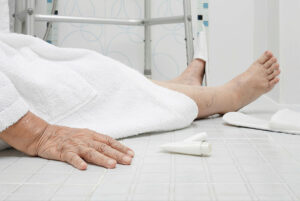
Nursing assessments
Nursing assessments are the basis for making diagnoses and interventions that meet the needs of the patient. Therefore, any error, lack of information or use of inadequate instruments can affect the next steps in the nursing care process, affecting the quality of care, safety and patient satisfaction.
Despite their relevance, nurses perceive nursing assessments as an administrative burden due to the increase in duplicated items. Different studies have shown that the registry of nursing assessments does not meet adequate standards of quantity and quality of information. Some factors that could justify this situation include increased patient complexity and heavy workload. In addition, there are many instruments used, varying from 8 to 15 to carry out the assessment.
A new nursing assessment instrument
The VALENF Instrument comprises only seven items for the assessment of nursing care upon the admission of a patient to the hospital. It groups the assessment of functional capacity, the risk of pressure injuries and the risk of falls together in one assessment. Thus, it reduces the bureaucratic time of nurses in adult hospitalization units and allows more time for the direct care of patients.
The creation of this new nursing assessment instrument has been met with great success. The Nursing Research Group (GIENF-241) of the Jaume I University of Castellón has developed it in collaboration with a team of nurses and experts in patient care. The assessment of these three main areas is of vital importance to providing effective, safe and personalized nursing care.
A combined and streamlined assessment instrument
Assessment of functional capacity is a key component of this instrument. This assessment focuses on the patient’s ability to perform daily activities, such as dressing, eating, and walking. Nurses can assess functionality through specific questions and direct observations. This allows them to determine the basic care needs of the patient and provide appropriate and personalized care.
Pressure injury risk is another important area covered in this instrument. Patients who are lying down or sitting for prolonged periods are at significant risk of developing skin lesions. This assessment focuses on identifying patients who are most at risk of developing these injuries so that preventive measures can be taken.

The fall risk assessment is the third key component of this nursing assessment tool. Falls can be especially dangerous for older patients, patients with previous injuries, and those who have mobility issues. By assessing the risk of falls, nurses can take preventive measures to reduce their likelihood.
The instruments used to assess functional capacity, the risk of pressure injuries and the risk of falls are probably the most used by nurses in adult hospitalization units. In clinical practice, these instruments are used independently. They share dimensions and items related to mobility, hygiene, food or the elimination of bodily waste. This implies that items become redundant and duplicated in the nursing assessment so that nursing assessments can become automatic and imprecise tasks without much input from nurses.
Combining nursing assessments with the instruments that measure functional capacity, risk of pressure injuries, and risk of falls, which are probably the most widely used by nurses in adult inpatient units, into a single instrument has been made possible with the creation of the VALENF Instrument. The basic principles in its design have been ease of use, applicability and parsimony.
In practice
Thus, the benefits of the VALENF Instrument for nursing care and patients are evident. Nursing staff can assess the needs of patients with less time, leading to earlier identification of risks and the implementation of more effective care.
The VALENF Instrument has been tested in a hospital and has received very positive feedback from nursing staff. Most of the respondents reported that the instrument is easy to use and that it allowed them to perform the assessment more quickly and efficiently. The results in terms of its implementation are successful. The hospital has 100% of the patients assessed by nursing in an average time of only 2 minutes.
In summary, the VALENF Instrument is a new nursing assessment tool that allows a more agile and parsimonious assessment of functional capacity, the risk of pressure injuries and the risk of falls in a single instrument of only seven items. This instrument improves nursing efficiency and effectiveness and ultimately benefits patients by providing more timely care.
Comments